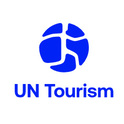UNWTO: International Tourism Challenged by Deteriorating World Economy
- In 2008, international tourist arrivals reached 924 million, up 16 million over 2007, representing a growth of 2%.
- Tourism demand slowed significantly through the year under the influence of an extremely volatile world economy (financial crisis, commodity and oil price rises, sharp exchange rate fluctuations), undermining both consumer and business confidence and resulting in the current global economic recession.
- The second half of 2008 saw growth come to a standstill with the number of international arrivals declining slightly – a trend which is expected to continue in 2009.
Weakening Overall Demand
The overall 2% growth in international tourism for 2008 builds on the strong results of the first part of the year before the collapse of the financial markets. The second half of the year showed an abrupt shift in trend with international tourist arrivals flat or showing negative growth in each of the last six months of 2008. Overall, the 5% growth between January and June gave way to a 1% decline in the second half of the year. Though certainly not immune to the economic woes, tourism has initially resisted the economic downturn better than other economic sectors, such as construction, real estate or car manufacturing.
As the current troubled economic scenario is expected to continue well into 2009 and probably beyond, UNWTO’s initial forecast for this year is for an even more modest performance. According to the January 2009 issue of the UNWTO World Tourism Barometer, international tourism is expected to stagnate or even decline slightly during the year. But, there is still a high degree of uncertainty and much will depend on the evolving economic conditions. If the economy starts to show signs of an earlier recovery, international tourism might grow slightly in 2009 but, if the economy deteriorates further, then the current forecast might be revised downwards.
Given the global uncertainty and with economic forecasts experiencing continued downward revisions, UNWTO will closely monitor developments to provide the most accurate analysis possible.
Mixed results by region in 2008
For the year as a whole, all regions were positive except Europe, which suffered a stagnation in arrivals. The best performances were registered in the Middle East (+11%), Africa (+5%) and the Americas (+4%) – in the case of the Americas, due to the strength of traffic to the USA up to August and the favourable performance of most Central and Southern American destinations.
Growth was negative in the last six months of 2008 in both Europe (-3%) and Asia (-3%). The drop is even more significant in Asia given its double digit growth in 2007 and strong showing in the first part of 2008 (+6%). On the other hand, the Americas (+1%), Africa (+4%) and the Middle East (+5%) still posted positive results in the second half of the year, although with a significant slowdown compared with the period between January and June.
Despite the general deceleration, in 2008 several destinations around the world showed very positive results in all world regions, - notably Honduras, Nicaragua, Panama, Uruguay, the Republic of Korea, Macao (China), Indonesia, India, Egypt, Lebanon, Jordan, Morocco and Turkey.
These results reflect international tourist arrivals only, for which comprehensive data is currently available. For domestic tourism, which is highly important for many destinations, UNWTO expects that it will show a more or less similar slowing trend. Results for international tourism receipts will be presented in a later stage. However, the experience of past years suggests that the growth of receipts tends to follow fairly closely that of arrivals.
2009 Outlook linked to Global Economic Performance
The slowdown in advanced economies, which are facing a contraction in gross domestic product for the first time since World War II, is already spreading to major emerging markets such as China, India, and Brazil.
UNWTO expects 2009 international tourism to be in the range of 0% to a 2% decline. Along with the Americas, Europe will be the most affected region in terms of overall tourism results as most of its source markets are already in, or entering into, recession. In Asia and the Pacific results are expected to be positive, although growth will continue to be much slower compared with the region’s performance in recent years; the same applies to Africa and the Middle East.
Notwithstanding this assessment, UNWTO highlights the fact that the softening of international tourism growth follows four historically strong years:
- +7% a year on average between 2004 and 2007, or well above the 4% long-term trend;
- 2008, with an increase of 2% based on a strong first half performance.
UNWTO’s response
History proves that crises can also provide opportunity because they call for substantial efforts and industry solidarity. Moreover, if short term crisis actions can be aligned with the continuing longer term global poverty and climate needs, the overall industry structure may actually be strengthened.
Against this background, UNWTO is increasing its response efforts to provide the sector, and its Members in particular, with the necessary support to help them endure these challenging times.UNWTO will focus on three interrelated initiatives:
- Supporting the sector’s immediate response through its recently established Tourism Resilience Committee to strengthen market intelligence and best practice sharing.
- Advocating tourism’s priority inclusion in general economic stimulation measures.
- Advancing tourism in the new Green Economy as a sector that can deliver on smart growth, intelligent infrastructure and clean energy jobs.
Our message will continue to be that this is a highly resilient sector that will return to strong growth when the overall economic crisis abates and one that can contribute more than others to poverty alleviation, climate response and a Green New Deal.
Note: Click here for an excerpt of the January issue of the UNWTO World Tourism Barometer.
UN Tourism Communications Department
+34 91 567 8100
UN Tourism
